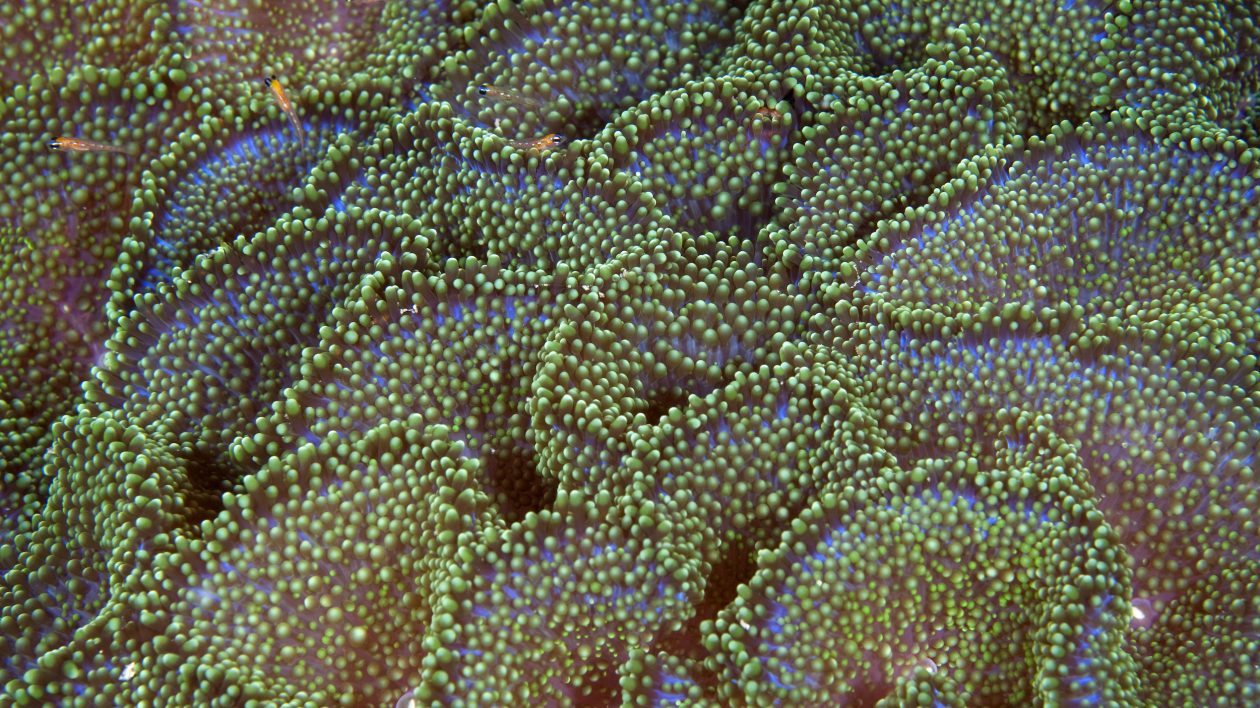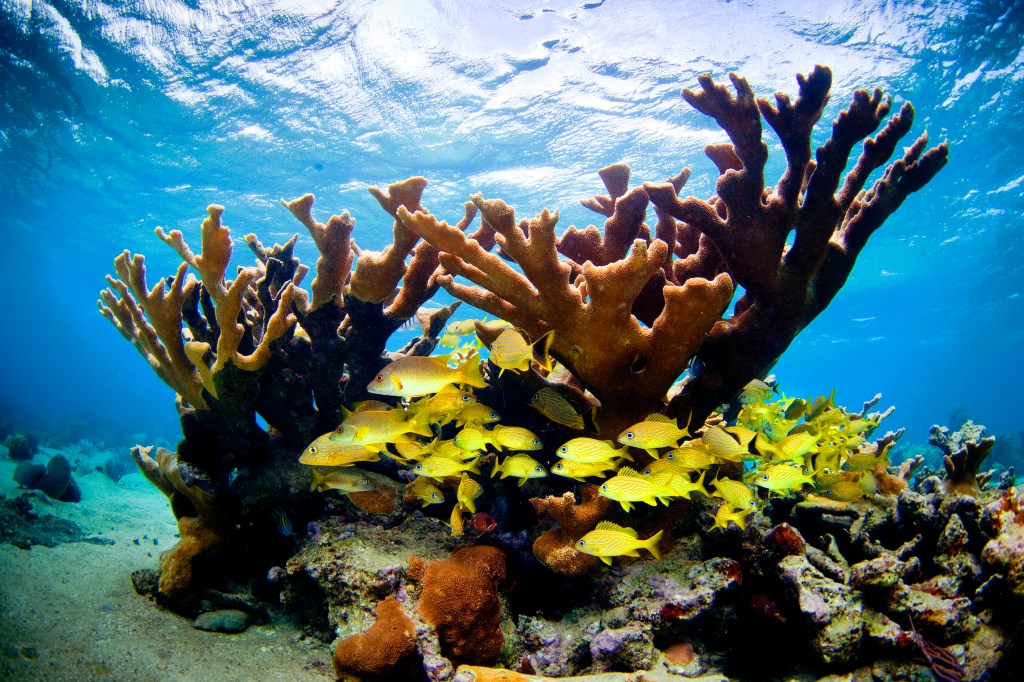Modeling climate change impacts is critical for prioritizing conservation efforts. Now, a study on coral reefs provides a way to overcome the inherent uncertainty in modeling future scenarios.
The Gist
The research team, led by The Nature Conservancy, wanted to identify which coral reefs in the Caribbean were most likely to withstand the impacts of climate change.
Iliana Chollett, a marine ecologist and lead author on the research, explains how the team prioritized reef sites: “We wanted to identify sites with low thermal stress, now and in the future. We wanted reefs that had a low probability of being hit by frequent hurricanes. And we wanted reefs that could both receive larvae but also give larvae, as well, to help other reefs repopulate.”
The researchers incorporated temperature data from four future climate scenarios, and then created a model to prioritize coral reef sites for conservation intervention based on which were more likely to survive. The study built on previous research that modeled larval dispersal and reef connectivity in the Caribbean. The results were published recently in the journal Global Change Biology .
The Big Picture
Climate change is already having disastrous consequences for coral reefs worldwide, and it’s clear that conservationists need to prioritize efforts on reefs most likely to survive. But climate change is inherently uncertain. We know it’s happening, but modeling exactly how and where it will impact reefs in the future isn’t always straightforward.
The first layer of uncertainty is future emissions levels, which largely depend on human behavior; how nations and individuals act to curb their emissions. The second layer of uncertainty is how to best mathematically model future changes to Earth’s temperature. While we’re certain temperatures will increase, Chollett explains that “there’s a lot of variability within models and within scenarios, so different models and scenarios tell you different things for different places.” That makes it difficult for conservationists to make site-specific decisions, like identifying exactly which reefs are more likely to survive.
This study is the first to compensate for these uncertainties by combining different models and scenarios into a single tool at a finer resolution than was previously possible. In this case, the coral reefs that perform best under most models and scenarios are where conservationists should focus their efforts.

The Takeaway
The Nature Conservancy’s Caribbean Division is using the results of this analysis to focus their reef conservation efforts in Cuba, Jamaica, Dominican Republic, and Haiti. To select sites for intervention, TNC scientists worked with local partners and communities to gather knowledge about the reefs identified in the analysis, including site-specific threats and government priorities.
“This is a great example of using both science and local knowledge to inform conservation,” says Ximena Escovar-Fadul, a senior associate for ocean planning and mapping with TNC. “This helps ensure that these insights aren’t just theoretical, which is still the case with a lot of prioritization science.”
The researchers hope their open-access methodology can help prioritize conservation interventions beyond the Caribbean. “Our method solves a common problem in conservation, and it can be used for any region or ecosystem,” says Chollett. “You have to choose different variables that will affect your ecosystem, but the heart of the method can be used anywhere.”



